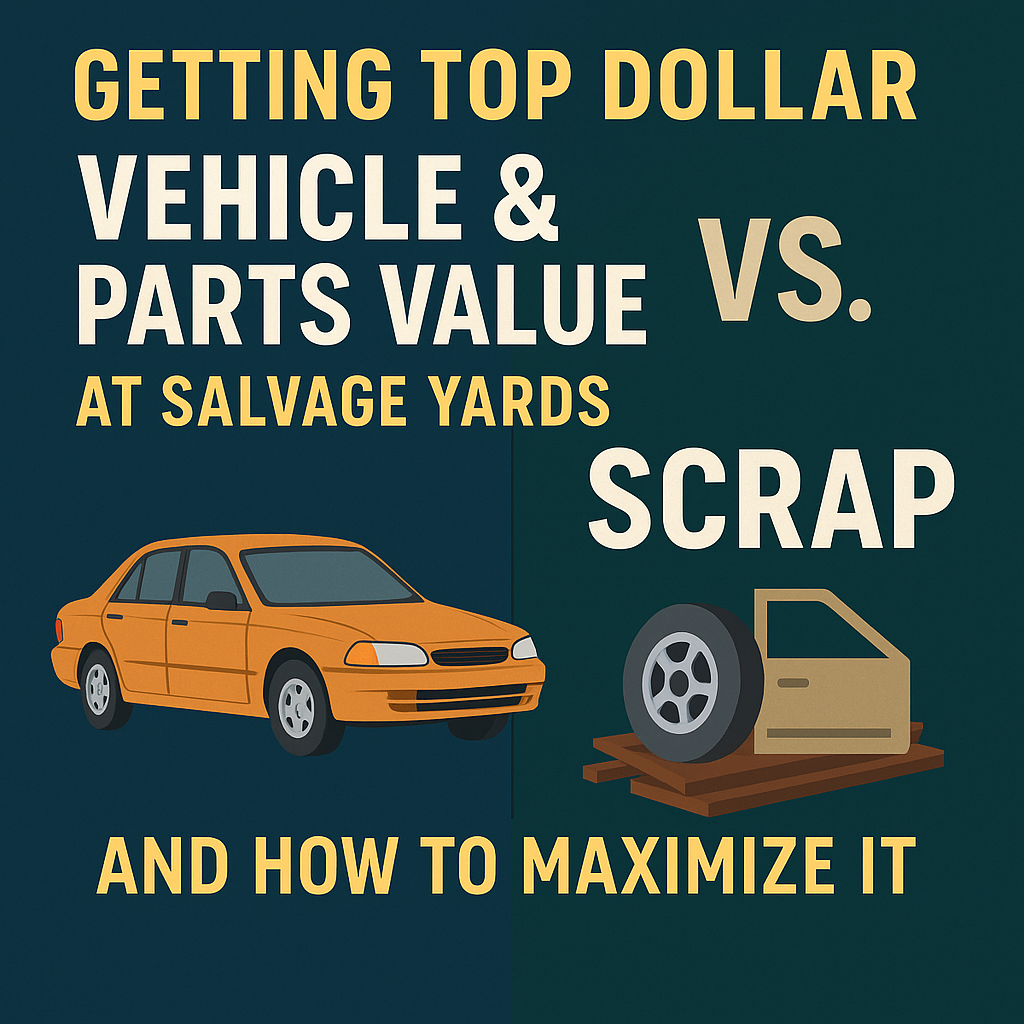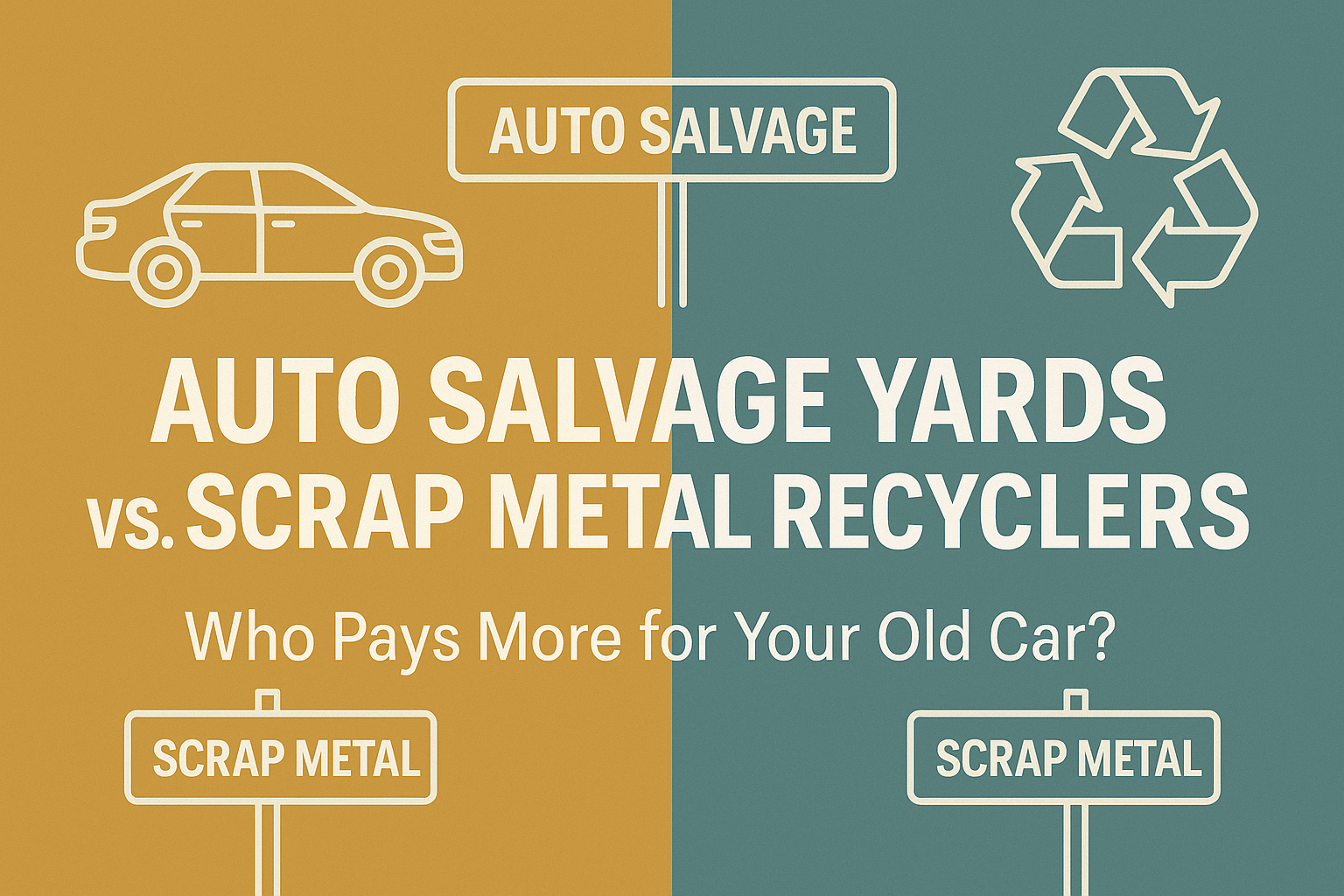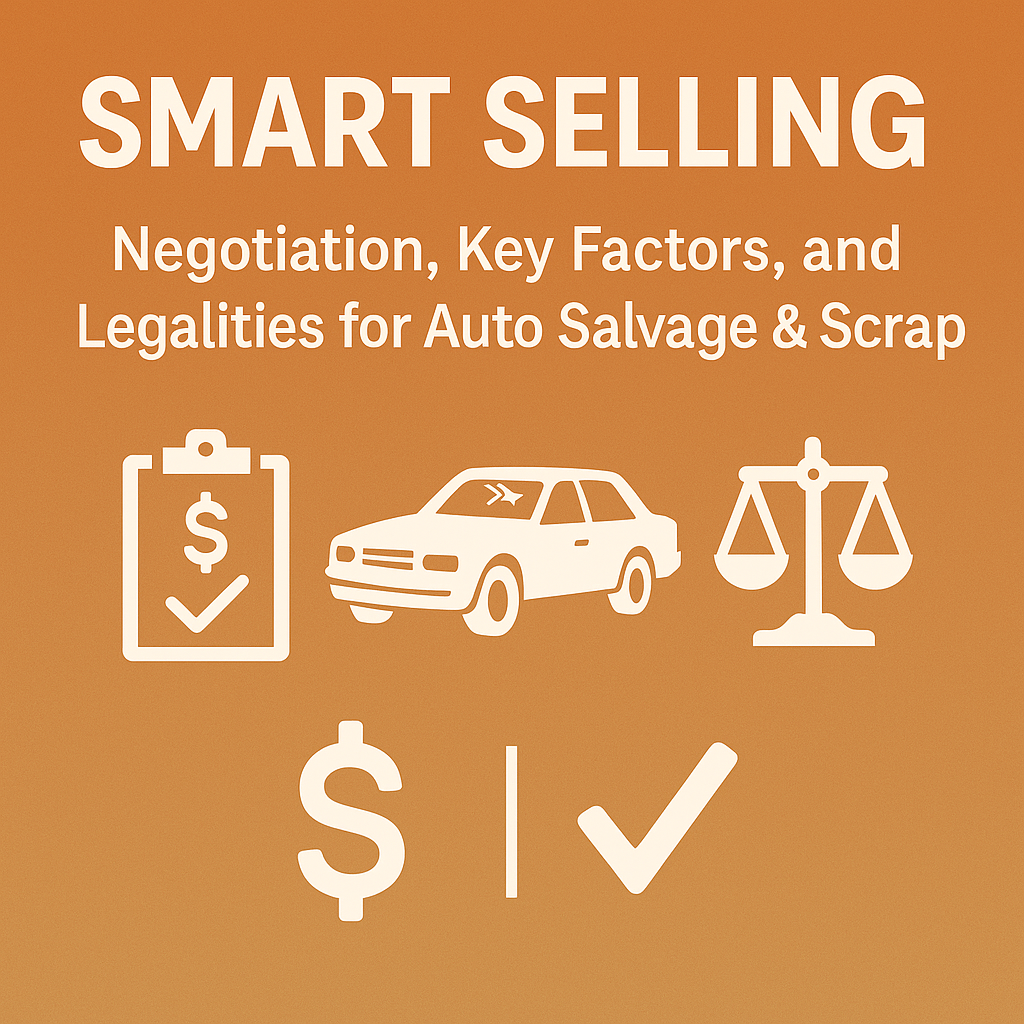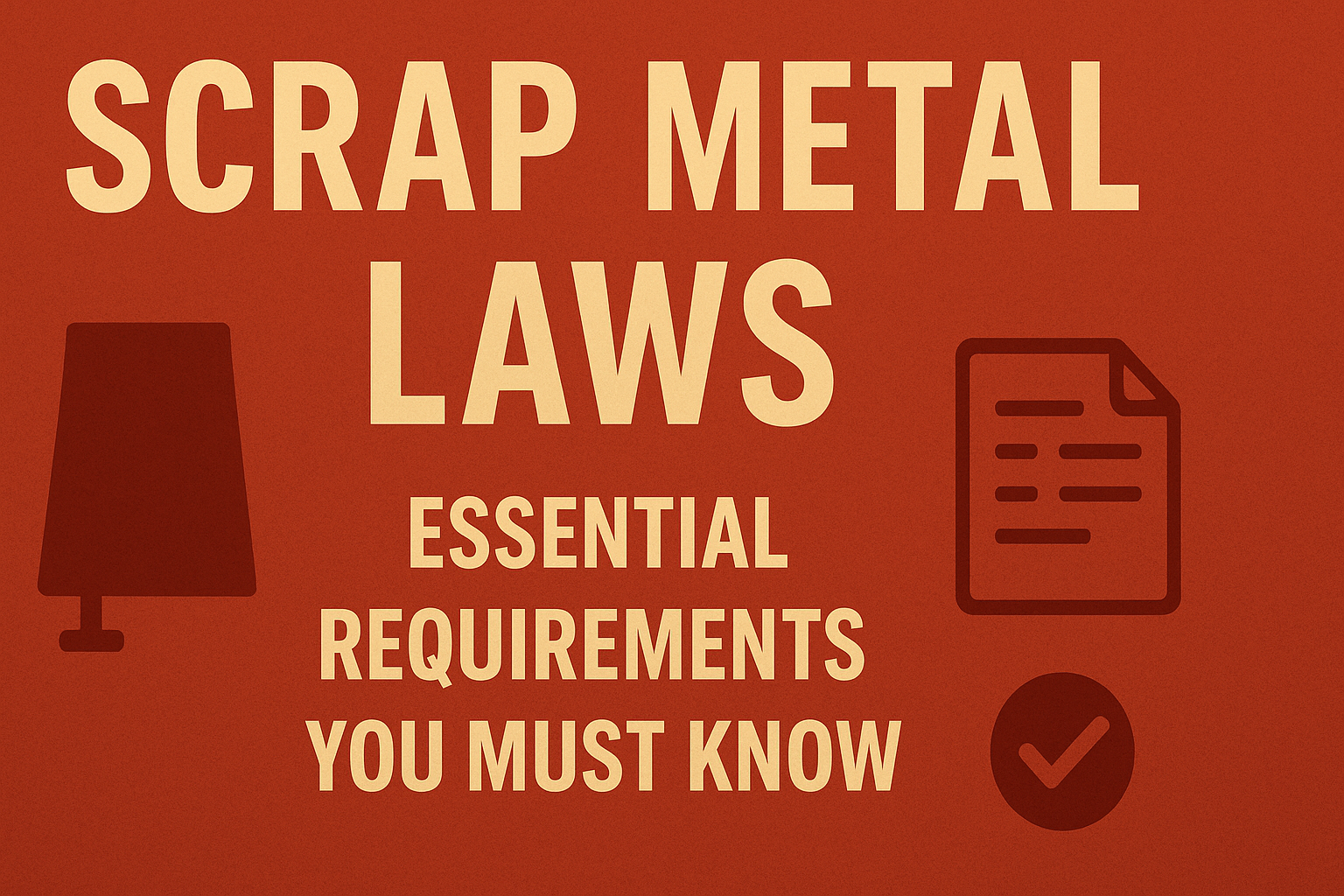Post 2 of 3: Getting Top Dollar: Vehicle & Parts Value at Salvage Yards vs. Recyclers (And How to Maximize It)

Welcome back to our series on maximizing your return when selling an old vehicle! In Part 1: Understanding Your Options: Auto Salvage Yards vs. Scrap Metal Recyclers – Who Pays More?, we covered the fundamental business models of auto salvage yards and scrap metal recyclers and what each primarily values.
Now, let’s dive deeper. In this post, we’ll compare how different types of vehicles and specific parts are valued by these two entities. Most importantly, you’ll discover a hybrid strategy that could significantly boost your earnings.
Vehicle-Specific Comparison: Which Outlet for Your Car?
The age, condition, and type of your vehicle heavily influence whether a salvage yard or a scrap recycler will offer you more money.
Older vs. Newer Vehicles
-
Newer (Under 10–15 years):
Usually better for salvage yards due to high demand for current, working parts. -
Older (15–20+ years):
More likely to fetch a better price from scrap metal recyclers—unless the vehicle is a classic or rare model, where a specialized salvage yard might pay a premium.
Popular vs. Rare Models
-
Popular Models:
Good demand at salvage yards, though high availability may temper prices. -
Rare Models:
Specialized salvage yards may pay more for rarity. Standard recyclers care only about weight.
Damaged vs. Intact Vehicles
-
Intact or Minor Damage:
Salvage yards usually offer more, seeing potential in reusable parts. -
Severely Damaged:
Scrap metal recyclers may pay more, but always get quotes—sometimes a few good parts remain salvageable.
Running vs. Non-Running Vehicles
-
Running:
Worth significantly more to salvage yards. -
Non-Running:
If engine or transmission are good, salvage yards may still pay well. If there’s catastrophic failure and the car is old, recyclers are often more competitive.
Complete vs. Partially Stripped Vehicles
-
Complete Vehicles:
Preferred by salvage yards. -
Partially Stripped:
Remaining shell is usually best for scrap metal recyclers.
Case Studies: Example Values
Here are some sample scenarios (values are illustrative only):
-
12-Year-Old Sedan, Non-Running (Transmission Issue):
Salvage Yard: $300–$700
Recycler: $200–$400 -
25-Year-Old Hatchback, Running but Worn:
Recycler: $150–$300
Salvage Yard: $100–$250
Parts-Specific Comparison: Where to Sell Individual Components?
Thinking about selling parts yourself? Here’s where you’ll get the best price:
-
Engines & Transmissions:
Working or rebuildable units go to salvage yards. Recyclers only pay for scrap weight. -
Body Panels & Frames:
Undamaged panels are for salvage yards. -
Wheels & Tires:
Good alloy wheels and tires with tread: salvage yards or direct to consumers.
Aluminum wheels: good scrap value with recyclers. -
Interior Components:
Excellent seats, dashboards, etc.: salvage yards or consumers. -
Electronics & Wiring:
Functional ECUs, alternators, starters: salvage yards.
Copper wiring: recyclers. -
Exhaust Systems & Catalytic Converters:
- Catalytic converters: Always sell to specialized catalytic converter buyers or reputable recyclers—this is often the single most valuable scrap part.
- Other exhaust parts: Salvage yards or recyclers for steel content.
Maximizing Your Return: The Hybrid Approach
Willing to invest a little time and effort? A hybrid strategy can maximize your total payout:
-
Assess Your Vehicle:
Identify high-value, easily removable components (catalytic converter, battery, alternator, good tires on alloy wheels, aftermarket stereo). -
Part It Out Strategically:
- Sell to Consumers: Aftermarket parts, high-end audio, excellent tires/wheels.
- Sell to Specialized Buyers: Catalytic converters.
- Sell to Salvage Yards: Other good, high-demand parts.
- Scrap the Rest: Take the stripped vehicle shell (and any leftover metal) to a scrap metal recycler.
-
Is It Worth It?
- Consider your time and skills: Dismantling takes tools, knowledge, and effort.
- Research part values vs. lump-sum offers.
- Factor in hassle: Selling to multiple buyers takes time.
This approach requires more work but can significantly increase your earnings if your vehicle has several valuable, accessible components.
What’s Next?
Now that you understand how specific vehicles and parts are valued—and how to use a hybrid strategy for maximum return—how do you negotiate effectively and what other factors should you consider?
Continue to Part 3: Smart Selling: Negotiation, Key Factors, and Legalities for Auto Salvage & Scrap for expert negotiation tactics, insights into regional and seasonal price influences, and crucial legal and environmental considerations.
Questions about your car’s value or where to sell specific parts? Contact us for advice, or browse our directory for trusted local buyers!
More in Car Recycling
View All Articles
Post 1 of 3: Auto Salvage Yards vs. Scrap Metal Recyclers: Who Pays More for Your Old Car?
Discover the key differences between auto salvage yards and scrap metal recyclers, and learn how to get the best price for your end-of-life vehicle. Find out who pays more for your junk car and why.

Post 3 of 3: Smart Selling: Negotiation, Key Factors, and Legalities for Auto Salvage & Scrap
Learn how to negotiate the best price for your old car, understand key legal and regional factors, and ensure responsible disposal when selling to auto salvage yards or scrap metal recyclers.

Alabama Scrap Metal Laws: Essential Requirements You Must Know in 2025
Alabama's scrap metal industry operates under strict regulations designed to combat theft and ensure legitimate transactions. Whether you're a scrap yard owner, automotive dismantler, or individual selling metal, understanding these laws isn't just important—it's legally required.
Ready to Turn Your Scrap into Cash?
Find the nearest scrap yards and get the best prices for your metal recycling needs.